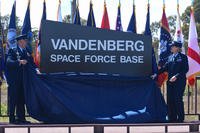Inside the thick red hull of Coast Guard Cutter Healy, a multitude of crewmembers, scientists and support staff hustle to and fro, performing their various jobs in preparation for operations during Arctic Shield 2013.
The 420-foot icebreaker reached its destination amidst the ice floes of the cold Arctic waters, and everyone is eager to begin deploying the five unique technologies aboard the ship that could have the ability to enhance oil detection and recovery capabilities in the Arctic.
Before the teams can begin their scientific mission, coordinated by the Coast Guard’s Research and Development Center, there is one very important step in the process that must be completed: the demonstration readiness review.
While the cutter boasts an effective climate control system, outside the inhospitable environment outside threatens anything not native to the far north. It may be early fall, but the wind chill keeps the temperature well below freezing. Frozen ridges stick up at random from the thin sheets of ice at the 74 degrees 35 minutes north latitude. On deck, a light snow coated the grey decks overnight. Coupled with the inherent danger of the heavy equipment necessary to deploy and recover the various technologies, an extreme regard for safety is vital to anyone involved in the operation.
“Before the actual exercise even begins, we have a demonstration readiness review,” said Lt. Brent Fike, the operational safety officer for the Research and Development Center. “This allows everyone involved to rehearse their intended procedures at a slow and safe pace, to get everyone on the same page.”
The walkthrough gives the Healy’s crew a chance to work with the scientists and gain an understanding of the equipment and the process necessary to maneuver it for operations on the day of the actual exercise. Besides familiarization with the heavy equipment operations, the walkthrough gives everyone involved a chance to work all the kinks out of the communication system.
“Communications is a cornerstone to the safe execution of any operation or test,” said Lt. Cmdr. Tom Hickey, the communications director for the Research and Development Center. “Utilizing the ship’s standardized communication process was instrumental for the success of the demonstration.”
Members of Healy’s deck department are assigned as liaisons to each of the technology deployment and recovery locations to assist with moving equipment and keeping an eye on everyone participating. The deck supervisors employed a system of radios to ensure swift and clear communications between different stations and the deck watch officer on the cutter’s bridge.
“Our crew is excited to be a part of the Coast Guard’s environmental stewardship mission in the Arctic,” said Capt. John Reeves, commanding officer of Healy. “Before we start testing equipment, ensuring that both the crew and our many passengers are safe is our number one priority.”
After a successful day of safety preparations, the crew and passengers were ready for the next day’s oil spill exercise to advance the United States’ ability to perform environmental stewardship and pollution response efforts in the emerging Arctic frontier.
























